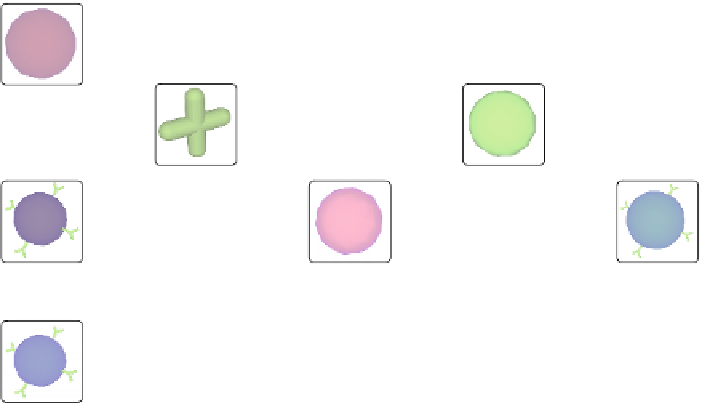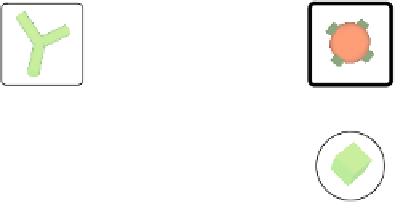Information Technology Reference
In-Depth Information
opsonizes
infects
Antibodies
Virus
Tissue Cell
secretes
secrete
Antigen
Plasma
B-Cell
destroys
infected
cell
eaten by
eaten by
specializes
Dendritic
Cell
Macrophage
recruits
recruits
recruits
recruits
activates
activates
Helper
T-Cell
B-Cell
Killer T-Cell
specializes
Cell-Mediated Immunity
Memory
B-Cell
2nd exposure to an antigen stimulates Memory
B-Cells to produce corresponding Plasma B-Cells
Humoral Immunity
Fig. 2.
Interactions of immune system agents triggered by viral infection: A virus is
usually identified by its antigens, which alert both dendritic cells and macrophages to
ingest the viruses. Both actions lead to recruitment of further IS cells. Dendritic cells
recruit B cells, which - in particular when activated by helper-T cells - replicate as
memory B cells or proliferate into plasma B cells, which in turn release antibodies to
opsonize the virus. On the other hand, macrophages with an engulfed virus stimulate
an increase in the proliferation of both helper and killer T cells, which are the key
players in cell-mediated immunity and destroy virus-infected tissue cells to prevent
any further spreading of the virus.
described above. In Fig. 4b a cell has been infected by the virus and antibodies
(from the lymph node) start entering the tissue area. Figure 4c shows a close-up
of the important agents: one virus is visible inside an infected cell, another virus
has docked onto the surface of a tissue cell and is about to enter it. A third virus
has already been opsonized by an attached antibody. Now macrophages will
start to engulf opsonized viruses and more macrophages are recruited in large
numbers (Fig. 4d). This triggers an analogous spike in the number of killer-T
and helper-T cells (also compare Fig. 5). The increase in killer-T cells makes it
more likely for these cells to collide with an infected tissue cell and initiate its
apoptosis.
After about 120 time steps, the infection has been fought off, with no more
virusesorantigensremaininginthesystem (Fig. 5). The concentrations of T
cells and macrophages return to their initial levels. At
t
= 150
.
0, the same virus




























